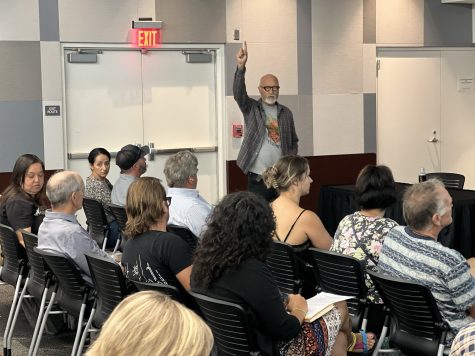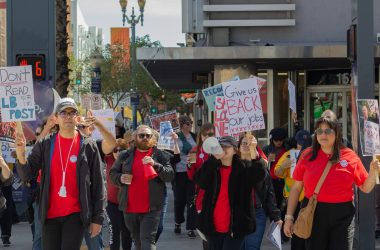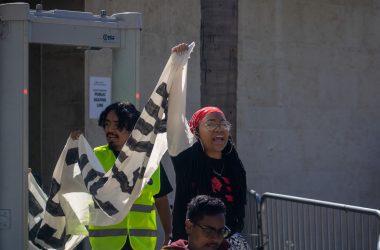Those attending the Sept. 13 public meeting for California State University Long Beach’s presentation of the Campus Master Plan’s Draft Environmental Impact Report (EIR), were displeased university staff didn’t take in personal comments. After the 30 minute presentation of the Draft EIR, the public was instructed to fill out comment cards or use an online tool to submit comments.
The EIR is meant to inform the public and decision makers about projects’ possible environmental impacts. CSULB’s Master Plan, approved in 2008, guides the necessary physical development of the campus to support the needs of students, faculty and staff.
According to the Beach Building Services website the California Environmental Quality Act asks for government agencies to inform on possible environmental issues to projects through an EIR. The Master Plan EIR was released on Sept. 1 to begin the public review and comment portion of the project.
Fareeha Kibriya, a Michael Baker International Consultant on the project, said there would be no question and answer session during the meeting. She said comments on the EIR would be collected in writing. People in attendance were told they had a few ways to comment. These options included a QR code leading to an online commenting tool, physical comment cards provided at the meeting and a survey via a link.
Kibriya said comments would be accepted, but they needed to be done in writing. Members of the public were distressed, they wanted to be heard.
“We can do both,” local resident and CSULB alumnus Anna Christensen said. “This is a public meeting.”

Christopher Reese, University Relations associate vice president, explained why they were asking for written comments.
“The reason why we are asking to put them [comments] in writing, they’re public comments and we need to make sure that the whole public hears the answer,” Reese said.
In an emailed response Jeff Cook, Strategic Communications Associate Vice President, explained the thought process of written comments further.
“Submission of comments in writing is the appropriate way to ensure campus compliance with CEQA,” Cook said. “This method provides access to each comment, allows response to every member of the public and ensures our administrative record accurately and completely reflects comments by members of the community.”
After Reese’s statement the attendees had an open forum where they expressed concern over various parts of the Master Plan. Members of CSULB staff remained on site to have one-on-one conversations with stakeholders. The comment box was empty by the end of the event.
Anna Christensen said it was offensive that a question and answer session was refused by CSULB members at the meeting.
“What kind of a host is this school to the community?” she asked.
Jan Sampson, a local home owner for 40 years and alumnus, said she had heard rumors around her neighborhood about what was coming from the CSULB Master Plan. She thought the meeting would be a chance to get clarity on the proposed changes. She had issues with the lack of connection with members of CSULB at the meeting.
“It makes the community and the neighbors not feel like the school is being friendly to us. We always feel like they’re hiding things and not being transparent,” Sampson said.
Sampson is concerned with what will happen to Puvungna. Melissa Soto, Capital Program Development Design and Construction Services manager, said Puvungna has been placed in a restricted covenant. She said there would be no development whatsoever within the conservation.
Christensen said details on the in-person meeting were buried online.
“CEQA requires only one form of noticing, but the campus conducted multiple forms of noticing which included publishing a notice in a local newspaper, sending notices to adjacent homes and businesses and sending emails to tribal leaders and council members with the intent to broadly solicit feedback on the adequacy of our Environmental Impact Report,” Cook said.
Beach Building Services’ website has the information for the in-person Sept. 13 and the Zoom Sept. 14 meetings under the California Environmental Quality Act Compliance section of their website.
The next step for the Master Plan would be a final EIR in Fall/Winter of 2023. This would include comments with responses and mitigation monitoring. The full Master Plan EIR is located here.




